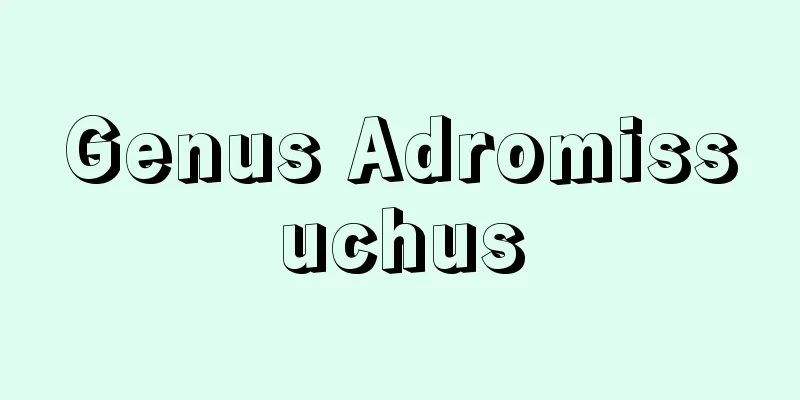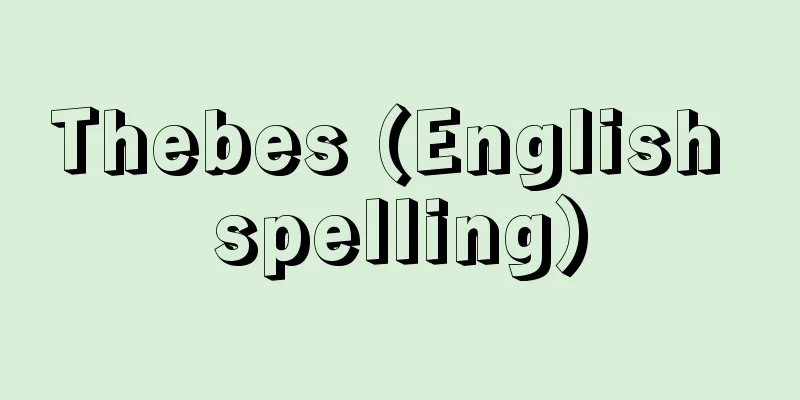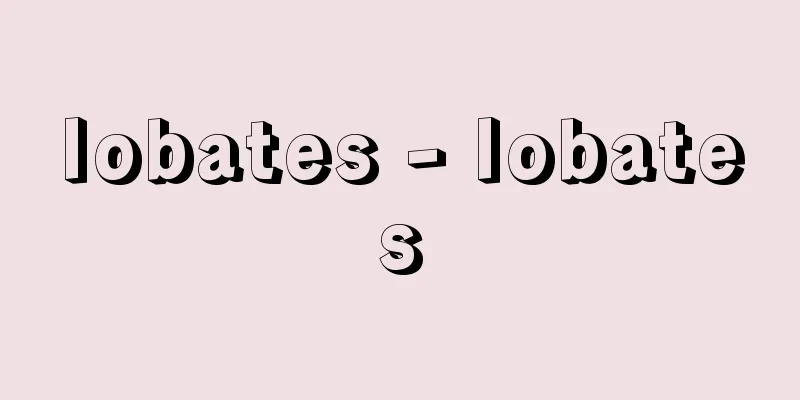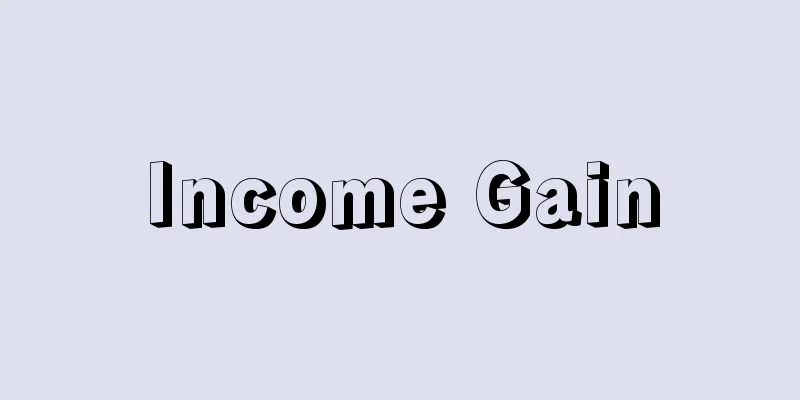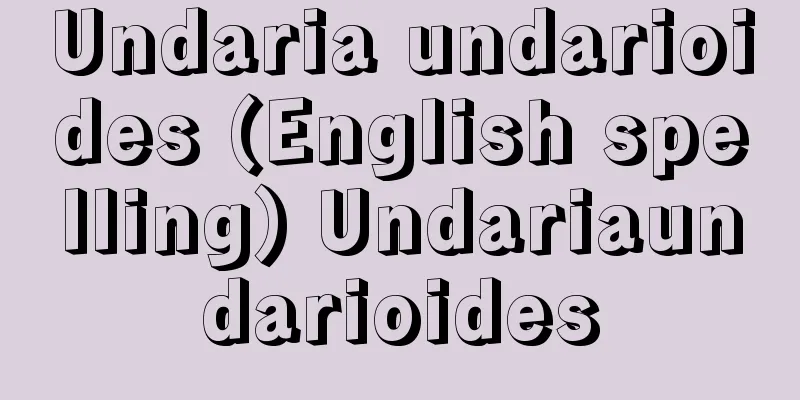Ukraine - Ukuraina (English spelling) Ukraine English
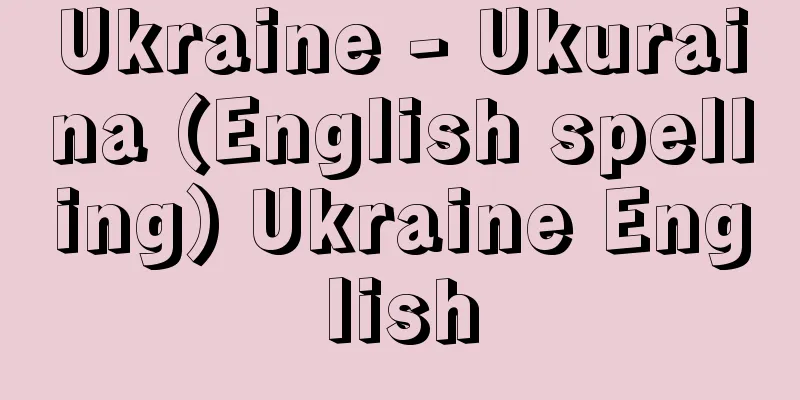
|
A republic in eastern Europe facing the Black Sea. Formerly one of the constituent republics of the Soviet Union, the Ukrainian Soviet Socialist Republic (Украинская ССР/Ukrainskaya SSR), it declared sovereignty as a republic in July 1990 and independence in August 1991, changing its name to "Ukraine". It borders Poland, Slovakia, Hungary, Romania, and Moldova to the west, Belarus to the north, and Russia to the east. It has an area of 603,500 square kilometers and a population of 48,457,102 (2001 census), 44.74 million (World Bank, 2014). Its capital is Kiev. Within the country are the Autonomous Republic of Crimea, 24 oblasts, and 2 special administrative regions. [Kazuo Watanabe and Hideaki Kimura] NaturePart of the Eastern Carpathian Mountains (highest point 2061m) rises near the western edge of the country, and the Podolsk Hills extend to the east. The central part of the country is a lowland where the Dnieper, Dniester and South Bug rivers flow. The Dnieper is the country's largest river, and about half of the country's total area belongs to the Dnieper River system. Its tributary, the Pripyat River, is located on the border between Ukraine and Belarus, and shows a unique landscape called "poleshie", where sand banks and marshes alternate. In the eastern part of the country, the Donets Hills (250-350m above sea level) spread out near the border with Russia, and are known as hills rich in underground resources. In the south of the country, the Crimean Peninsula juts out into the Black Sea, and the steep Crimea Mountains, over 1500m above sea level, run east to west along the southern edge. The climate is mild and continental, but becomes more severe from the southwest to the northeast. The monthly average temperature varies considerably in January, from 4 °C (on the southern coast of the Crimean Peninsula) to -8 °C (in the northeast), but in July it varies less, from 23 °C to 18 °C. Annual precipitation exceeds 1,600 mm in the Carpathians, but decreases to 700 mm in Polesie in the north and 300 mm along the Black Sea coast in the south. In general, most rain falls from spring to early summer, but during this season unstable dry air masses from Central Asia can invade southern Ukraine as strong winds called Sukhobeys, causing serious damage to agriculture. The vegetation consists of mixed forests of pine, oak and aspen in the north and west, broadleaf forests and grasslands in the central lowlands, and arid grasslands of mugwort and burdock in the south, as well as marshes where salt has erupted and stuck to the ground. A belt of black soil runs east to west through the center of the country, and deep chestnut soil is distributed to the south of that, making it some of the most fertile farmland in the world. Of the area of the country that is estimated to have once been forest, 90% has already been cleared and turned into farmland, or has become grassland due to repeated burning. There are nine nature reserves (totaling 127,000 hectares) in the country. [Kazuo Watanabe and Hideaki Kimura] residentsThe main ethnic groups in Ukraine are Ukrainians (77.8%) and Russians (17.3%), followed by Belarusians, Moldovans, Crimean Tatars, Jews, etc. (2001). Looking at demographic characteristics, the natural increase rate is low at about 3% between 1985 and 1992, but the urban population as a percentage of the total population has risen from 34% in 1940 to 62% in 1980 and 68% in 1994, indicating that the concentration of population in cities is progressing.The population growth rate from 1975 to 2003 was minus 0.1%, and the urban population rate in 2003 was 67.3%.The populations of major cities are: Kiev 2.611 million, Kharkov 1.47 million, Dnipropetrovsk 1.065 million, Odessa 1.029 million, Donetsk 1.016 million (2001). [Kazuo Watanabe and Hideaki Kimura] historyIn the 6th and 5th centuries BC, several Greek city-states appeared along the Black Sea coast, but the history of modern Ukrainians began when Eastern Slavs invaded the central region along the Dnieper River in the 4th to 7th centuries AD, and Kievan Rus (Grand Duchy of Kievan Rus) with Kiev at its center emerged in the 9th century. This state flourished by adopting Greek Orthodox Christianity and Byzantine culture, but collapsed due to the Mongol invasion in the early 13th century, and after this the Eastern Slavs split into Russians, Ukrainians, and Belarusians. In the second half of the 14th century, the northern part of the country was annexed to the Grand Duchy of Litva, the southwestern part to Poland, and Galicia in the west came under Hungarian rule. The peasants became serfs of Polish lords, but a group of peasants who fled to the lower reaches of the Dnieper formed the Cossacks. The 1569 merger of Litva with Poland intensified exploitation by the Polish nobility and oppression of Orthodox Christians by the Catholic Church. The Crimean Tatars and Turks also invaded. In 1648-1654, Ukrainians rebelled against Polish rule under the leadership of Bogdan Khmelnytsky and sought protection from the Russian Tsar, and the left bank of the Dnieper and Kiev were annexed to the Russian Empire. In the second half of the 18th century, the right bank of the Dnieper also became Russian territory due to the partitions of Poland, and Galicia became Austrian territory. The Black Sea coast and Crimea were also acquired from Türkiye. During the Great Northern War, the army of Swedish Tsar Charles XII invaded Ukraine, but was crushed by Peter the Great at the Battle of Poltava in 1709. From this time onwards, Ukrainian autonomy was restricted, and at the end of the 18th century, Catherine the Great made Ukraine a complete part of Russia. In the 19th century, a nationalist movement arose in which the poet Taras Shevchenko also participated in opposition to the Russification policy. In the second half of the 19th century, Ukraine came to be known as the breadbasket of Europe, while the coal and steel industries developed in Donbass (the Donets coalfield), producing 71% of the coal and 58% of the steel of the Russian Empire in 1913-1914. The labor movement also became active, and during the 1905 Revolution, soviets were formed in Kiev and Odessa. After the February Revolution of 1917, the Central Rada (council) was established in Kiev in March to oppose the Provisional Government, but the Bolshevik forces declared Ukraine a Soviet Socialist Republic at the Congress of Soviets held in Kharkov in December after the October Revolution, organized a Soviet government, and attacked Kiev in January 1918, abolishing the Central Rada. However, the whole of Ukraine was soon occupied by German and Austrian troops, and under them, the landlord government of Gethman Skoropadsky was established in April, but the peasants launched a partisan struggle, and after the occupying forces withdrew due to the revolution in their own country, the nationalist Simon Petlyura (1879-1926) tried to succeed him, but the Soviet government was restored in early 1919. After this, after fighting between the counter-revolutionary Denikin's army, the Makhnovist army which had the support of the peasants, and the Red Army, as well as the Polish-Soviet War from April to October 1920 and the war with the counter-revolutionary Wrangel Army, the Soviet government was established and the Soviet Union was formed with the three republics of Russia, Belarus and the Transcaucasus at the end of December 1922. Ukraine, which had developed both its industry and agriculture, played a central role in building the Soviet economy, but the great famine of 1932 during full-scale collectivization and the mass arrests and executions of Ukrainian leaders and party members during the Great Purges in the late 1930s were great tragedies. In 1939, Western Ukraine was reunited from Poland, and in 1940, parts of Bessarabia and northern Bukovina were added to the territory. In 1941, during World War II, Ukraine was occupied by the Nazi German army in one fell swoop, more than 5 million residents were killed, and it was thoroughly destroyed and plundered. However, in early 1944, it achieved liberation and immediately began reconstruction with the help of other republics and peoples of the Soviet Union, and after the war, people's democracies were born in neighboring Eastern Europe and relations of cooperation were established. Transcarpathian Ukraine (Zakarpatiskaya Oblast) was reunited from Czechoslovakia, and in 1954, the Crimean region was handed over from the Russian Republic. In the latter half of the 1980s, as perestroika (reforms) progressed in the Soviet Union, Ukraine declared its sovereignty on July 16, 1990. The declaration included guarantees of both Ukrainian and Soviet citizenship, the right to decide on economic issues, promotion of the use of the Ukrainian language, and the organization of an internal military. At the second congress of the nationalist group "Rufu" held on October 25, it was decided that the goal would be the restoration of an independent Ukrainian state. In a national referendum in March 1991, the majority supported maintaining the federation, but on August 24, after the August coup in the Soviet Union, the Supreme Soviet changed the country's name from Ukrainian Soviet Socialist Republic to Ukraine and declared independence. After that, Russia raised issues such as border issues, which stimulated ethnic Ukrainian sentiment, and in a vote on December 1, even in areas with a large Russian population such as Crimea, the majority supported independence, and Leonid Kravchuk (1934-), chairman of the Supreme Soviet of the Communist Party of Ukraine, who had strengthened his stance on independence from the Soviet Union, was elected as the first president after independence. Kravchuk, together with Russian President Yeltsin and Chairman of the Supreme Soviet of Belarus Stanislav S. Shushkevich (1934-), founded the Commonwealth of Independent States (CIS) of three Slavic countries in Minsk, Belarus on December 8. On December 21, in Alma-Ata (now Almaty), Kazakhstan, 11 of the former Soviet republics, excluding the three Baltic states and Georgia, signed the Treaty on Joining the Commonwealth of Independent States, and the Soviet Union was dissolved. [Kazuo Watanabe and Hideaki Kimura] PoliticsIn March-April 1994, the first Supreme Soviet elections after independence were held, in which the left-wing coalition of the Communist, Socialist and Peasant Parties won a landslide victory, while Rukh, who advocated complete independence from the Soviet Union, was defeated. In the presidential runoff election on July 10, Kuchma, a pragmatic pro-Russian who had become prime minister after having been president of Yuzhmash, the largest strategic missile factory in the Soviet Union, defeated Kravchuk. In August, Kuchma placed the government and regional parliament under the direct control of the president, and attempted to promote economic reforms. The Supreme Soviet opposed this, and the executive branch agreed. In June 1996, the Supreme Soviet adopted a new constitution that strengthened its powers. According to this, the president's term of office was five years, the Supreme Soviet was unicameral with 450 seats, and the prime minister was nominated by the president and approved by more than two-thirds of the Supreme Soviet. In the Supreme Soviet elections in March 1998, the Communist Party became the largest party. Kuchma was re-elected in the November 1999 presidential election, strengthening his regime. As a result of the Verkhovna Rada election in March 2002, "For a United Ukraine" (a coalition of pro-Kuchma political parties) and "Our Ukraine" (a coalition of anti-Kuchma political parties) became the two major parties, but "For a United Ukraine" later split and formed a ruling coalition. In November 2004, when President Kuchma's term expired and he stepped down, a presidential election was held, with the ruling party candidate, pro-Russian Prime Minister Viktor Yanukovych (1950- ), supported by Kuchma, facing off against the pro-Western opposition candidate Yushchenko. Initially, Yanukovych was reported to have won, but suspicions of election fraud were discovered, and a re-election was held in December of the same year. As a result, Yushchenko was elected and took office as president in January 2005. The large-scale protests against the fraudulent election at this time are called the "Orange Revolution" after the opposition's symbolic color. In February of the same year, Yulia Volodymyrivna Tymoshenko (1960- ) became prime minister and a new cabinet was formed. However, in September, Yushchenko dismissed all of the cabinet members, including Tymoshenko, due to internal conflicts within the cabinet, and appointed Yuriy Ivanovych Yekhanurov (1948- ), governor of Dnipropetrovsk Oblast, as his successor. In January 2006, a revised constitution was put into effect, with the main focus on reducing the powers of the president. In the Verkhovna Rada elections held in March of the same year, Yanukovych's "Ukrainian Regions" (Party of Regions) became the largest party. Tymoshenko's "Tymoshenko Coalition" became the second largest party, and Yushchenko's ruling party "Our Ukraine" was defeated and became the third largest party. After the election, a coalition was formed between the "Ukrainian Regions", "Our Ukraine", the Socialist Party and the Communist Party, and Yanukovych became Prime Minister, but soon "Our Ukraine" came into conflict with Yanukovych and withdrew from the coalition. The conflict between Yushchenko and Yanukovych became increasingly intense, and in order to settle it, the Verkhovna Rada election was held in September 2007. In this election, "Ukrainian Regions" became the largest party, but Yushchenko chose to form a coalition with the second party, "Tymoshenko Union", and the third party, "Our Ukraine - National Self-Defense", and Tymoshenko became Prime Minister again. In the presidential election held in January-February 2010, Viktor Fedorovych Yanukovych (1950- ) was elected (inaugurated in March), and in the presidential election held in May 2014, Petro Poroshenko (1965- ) was elected and inaugurated in June. Arseniy Yatsenyuk (1974-) has been the Prime Minister since February 2014. [Kazuo Watanabe and Hideaki Kimura] Relations with RussiaTo understand the situation in Ukraine, it is necessary to know that the country is composed of several regions with their own characteristics. In the east, there are many Russians in certain areas such as Donetsk (formerly Stalino). The area of Poltava and Kiev to the west is called Little Russia, and was an autonomous Cossack state. The right bank of the Dnieper to the west was an area with many Polish landowners that was annexed to the Russian Empire during the partitions of Poland. Areas to the south such as Odessa were colonized by Russians, Ukrainians, and Jews, and further northwest is Galicia, which belonged to Austria during the partitions of Poland, and to the south of that is an area that was part of Hungary. In Ukraine, anti-Russian sentiment is strong in the western regions. Also, before the war, the Crimean Tatars were an autonomous republic in the Crimean Peninsula, but in 1944 the Crimean Tatars were deported to Central Asia and other places, and the autonomous republic was subsequently dissolved. It then became the Autonomous Republic of Crimea in 1991, and in 1992 half of the 400,000 surviving Tatars who had been deported returned. After World War II, Crimea was transferred from Russia to Ukraine in 1954, which is why there are many Russians in the area. After the collapse of the Soviet Union, the tactical nuclear weapons were transferred to Russia, and in January 1994, the leaders of the United States, Russia, and Ukraine signed a nuclear disarmament agreement, which meant that Ukraine's nuclear weapons would be completely eliminated within seven years, and in December 1994, Ukraine joined the Nuclear Non-Proliferation Treaty (NPT). Sevastopol, located in the southwestern part of the Crimean Peninsula, has been the base of Russia's Black Sea Fleet since the Soviet era, and Russia and Ukraine have been in conflict over its ownership since the collapse of the Soviet Union, but in May 1997, the two countries signed three agreements that stipulated the division of the Black Sea Fleet, among other things. In March 1999, the agreements were ratified by the Ukrainian Verkhovna Rada. In Crimea, where 70% of the population is Russian, there have been problems with secession for some time, and in May 1992 a constitution was adopted that included a clause for independence from Ukraine, but it was repealed under pressure from Ukraine. In January 1994, pro-Russian President Meshkov was elected in Crimea, and in April the Crimean Verkhovna Rada elections saw a landslide victory for pro-Russian forces in favor of independence from Ukraine, restoring the 1992 constitution on May 20. In response, the Ukrainian parliament immediately resolved to invalidate the constitution, and in March 1995 abolished the position of "President of the Republic of Crimea." In May 1997, a treaty of friendship and cooperation was signed with Russia, including a non-violation of borders, and Crimea's return to Ukraine was confirmed. In October 2007, Russia announced a price increase for the natural gas it supplies to Ukraine, which triggered an intensification of the conflict between Ukraine and Russia. In January 2009, Russia suspended natural gas supplies to Ukraine and to Europe via Ukraine, but supplies were resumed soon after. Along with Turkmenistan, Ukraine did not join the Economic Union formed by the CIS countries in September 1993, but decided to become an associate member in April 1994. Later, the Eurasian Economic Community was formed centered around Russia, but Ukraine did not join, and instead formed GUAM (Guide to Democracy and Economic Progress) with Georgia, Azerbaijan, and Moldova. Furthermore, Ukraine is working to strengthen ties with neighboring countries, while also seeking to move closer to the North Atlantic Treaty Organization (NATO). [Kazuo Watanabe and Hideaki Kimura] Industry and EconomyMining and ManufacturingUkraine is known as a country with many underground resources, advanced heavy industry, and rich agricultural products, and development is also quite advanced. The Donets Oblast and the area along the Dnieper River are particularly important in the national economy, and these two are intricately connected to form one of the world's leading industrial regions. The Dnieper River, which plays a major role in this, has also been developed, and there are dams, locks, and power plants at Kiev, Kremenchug, Kakhovka, and Dnieper, forming a power source area called the Dnieper Cascade. The Dnieper Dam is abbreviated to Dnieproges, and is an arch dam completed in 1932. As a result, the Dnieper River has become a series of many lakes in a stepped pattern, except for the upper and lower reaches. The "South Ukraine-North Crimea Canal" runs south from the Kakhovka Reservoir, helping to develop agricultural land in this arid region. The Donets coalfield in the east is one of the world's leading coal-mining regions, and during the Soviet era it produced about one-third of the Soviet Union's total. Bituminous and anthracite coal is abundant and of good quality. Meanwhile, in the central part of the country, there is the Krivoy Rog iron mine, one of the largest in the world, which produces abundant iron ore. The connection between these two has made it possible for Ukraine's steel industry to develop on a large scale. Iron ore is produced mainly in Krivoy Rog, while oil is produced in the eastern Carpathian Mountains. Ukraine is also rich in natural gas, which is produced near Kharkov in the east and Chernigov in the north. Other mineral resources include gypsum (northern Bukovina) and potash salts. The industrial cities of Donbas and Dnieper include Donetsk, Makeyevka, Gorlovka, Zaporozhye, Dnipropetrovsk, and Dniprodzerzhinsk, and their industrial products are diverse, including machine tools, steel (Zaporozhye, etc.), special steel, automobiles (Kommunar plant in Zaporozhye, etc.), turbines, aircraft, electronic equipment, nitrogen fertilizer, etc. There are many other industrial cities scattered throughout the country, including Kiev (precision equipment, small cameras), Kharkov (generators, tractors), Luhansk (one of the world's largest railway car factories), Simferopol (television), and Lvov (freight cars). [Kazuo Watanabe and Hideaki Kimura] AgricultureAgriculture takes many forms, from suburban vegetable farming, suburban dairy farming, grains, and industrial crops to extensive grazing in dry areas and transhumance (in the Crimea Mountains). Approximately 70% of the country's total land area is agricultural and pasture land, 80% of which is sown land, the other half of which is used for grain cultivation, making the country the granary of Europe. Autumn-sown wheat and corn are the most common crops, while rye, buckwheat, and barnyard millet are cultivated in Polesie and the Carpathian Mountains, and irrigated rice is grown along the Black Sea coast. Common industrial crops include sugar beets, sunflowers (the oil from their seeds is used for food and industrial purposes), flax, hemp, and hops. [Kazuo Watanabe and Hideaki Kimura] Economic situation after independenceIn the Soviet Union, each constituent republic specialized in producing certain products through a division of labor, creating an industrial structure that supported the whole. However, after independence, this division of labor collapsed, causing delays in the supply of raw materials, parts, etc. This, combined with a policy of full market economics, led to a more severe decline in production and rising inflation than in Russia. The oil shortage was particularly hard on Ukraine. Western countries demanded the closure of the Chernobyl nuclear power plant, which had suffered a major accident in 1986, but Ukraine refused, citing energy shortages. However, with economic assistance from the Group of Seven (G7) countries, the Chernobyl nuclear power plant was completely closed in December 2000. Due to a shortage of rubles caused by rising prices, the karbovanets coupon was introduced in January 1992 to replace the ruble currency, and Russia left the ruble zone in November. In September 1996, a new currency, the hryvnia, was introduced to replace the karbovanets coupon that had been used temporarily. Since 2000, the country has continued to grow thanks to the economic recovery of neighboring countries, but since the summer of 2008, the demand for steel has plateaued and the financial situation has worsened due to the impact of the global financial crisis. Furthermore, the economic growth rate fell to 0% in 2013 due to a decline in the steel industry and exports to Russia, and in 2014, the country's growth rate fell to -6.8% due to the impact of the conflict in the eastern part of the country. Total exports for that year were $50.1 billion and total imports were $49.8 billion. Major export items are iron, non-ferrous metals, grains, and machinery, while import items are petroleum, natural gas, machinery, and electronic equipment. Russia is the number one trading partner for both exports and imports, followed by Turkey and Egypt for exports, and China and Germany for imports. The 2008 global financial crisis had a major impact on Ukraine, causing the exchange rate of the hryvnia to plummet and leading to an economic crisis. As a result, Ukraine received a loan from the International Monetary Fund (IMF). In February 2008, Ukraine joined the World Trade Organization (WTO). [Kazuo Watanabe and Hideaki Kimura] trafficThe transportation system has developed significantly due to the need to transport agricultural products such as grains, relatively heavy solid fuels, and heavy industrial products. The total length of railways is 22,473 km, of which 9,250 km is electrified (2004). The main railway network radiates from Kharkov, Kiev, and Lvov, and international trains such as those from Moscow to Kiev to Prague (Czech Republic) run on the route. In addition, railways and roads connecting the Donbas and Dnieper with the Black Sea coast are well developed, and with the addition of water transportation mainly on the Dnieper River, transportation is extremely convenient. Seaports on the Black Sea and Sea of Azov coasts have long prospered through the export of coal, grain, and industrial products, and major port cities include Odessa, Mariupol, and Kerch. [Kazuo Watanabe and Hideaki Kimura] languageUkrainian was stipulated as the state language by the Language Law of November 1989, and Ukrainian is increasingly being used in primary and secondary education. In 1992, Kiev University decided to conduct all lectures in Ukrainian, and after a five-year grace period, it was decided that any professors who could not do so would be dismissed. Ukrainization also progressed in religion, with the Ukrainian Orthodox Church, which had been unified into Russian Orthodoxy, and the autocephalic Orthodox Church, which had been revived in 1990, merging to form the Ukrainian Orthodox Church in June 1992, with Mstislav as Patriarch. [Kazuo Watanabe and Hideaki Kimura] Relations with JapanDiplomatic relations were established in January 1992. The Embassy of Japan in Ukraine opened in January 1993, and the Embassy of Ukraine in Japan in September 1994. Imports from Ukraine to Japan amount to $610 million, including automobiles, machinery and equipment, and electrical and electronic equipment, while exports to Japan amount to $210 million, including grains, iron ore and slag, and steel products (2014). President Kuchma visited Japan in March 1995, President Yushchenko in July 2005, and Prime Minister Tymoshenko in March 2009. [Kazuo Watanabe and Hideaki Kimura] "Ukrainian Nationalism - The Dilemma of Independence" by Nakai Kazuo (1998, University of Tokyo Press)" ▽ "Ito Takayuki, Iuchi Toshio, and Nakai Kazuo (eds.), World History 20: History of Poland, Ukraine, and the Baltics, New Edition (1998, Yamakawa Publishing)" ▽ "Tokyo University of Agriculture and Technology Ukraine 100 True Faces Editorial Committee (eds.), "100 True Faces of Ukraine - Another Guidebook" (2005, Tokyo University of Agriculture and Technology Press)" ▽ "Kurokawa Yuji, The Story of Ukraine's History - Europe's Last Great Power" (Chuko Shinsho) [References] | | | | | | | | | | | |Kremenchug | | | | | | | | | | | | | | | | | | | | | | | | | | | | | | | [Supplementary information] |"> Ukraine flag ©Shogakukan Illustration/Shogakukan Creative "> Ukraine location map Source: Shogakukan Encyclopedia Nipponica About Encyclopedia Nipponica Information | Legend |
|
ヨーロッパ東部、黒海に面する共和制国家。かつてはソビエト連邦の構成共和国の一つ、ウクライナ・ソビエト社会主義共和国Украинская ССР/Ukrainskaya SSRであったが、1990年7月共和国主権宣言、1991年8月独立宣言し、国名を「ウクライナ」とした。西はポーランド、スロバキア、ハンガリー、ルーマニア、モルドバに、北はベラルーシ、東はロシアに接する。面積60万3500平方キロメートル、人口4845万7102人(2001センサス)、4474万人(2014年世界銀行)。首都はキエフ。国内にクリミア自治共和国と24州、2特別行政区がある。 [渡辺一夫・木村英亮] 自然国土の西端近くに東カルパティア山脈の一部(最高点は2061メートル)がそびえ、その東にはポドリスク丘陵が張り出している。国土の中央部は、ドニエプル川、ドニエストル川、南ブク川の流れる低地となる。ドニエプル川はこの国最大の川で、国土総面積の約2分の1がドニエプル水系に属する。その支流プリピャチ川はウクライナとベラルーシとの国境地帯にあたり、砂堤と湿地が交替する、ポレシエとよばれる独特の景観をみせる。国土の東部にはロシアとの国境近くにドネツ丘陵(標高250~350メートル)が広がり、地下資源の豊かな丘陵として知られる。国土の南にはクリミア半島(クリム半島)が黒海に突出し、標高1500メートルを超える急峻(きゅうしゅん)なクリム山脈が南縁を東西に走る。 気候は穏やかな大陸性気候であるが、南西から北東に行くにつれ厳しさを増す。月平均気温は、1月は4℃(クリミア半島南岸)~零下8℃(北東部)とかなり差があるが、7月は23℃~18℃と差が小さい。年降水量はカルパティア山脈で1600ミリメートルを超すが、北部のポレシエで700ミリメートル、南部の黒海沿岸で300ミリメートルに減少する。一般に雨は春から初夏に多いが、その季節には中央アジアから不安定な乾燥した気団がスホベイとよばれる強風となってウクライナ南部に侵入し、農業に大きな災害を与えることがある。 植生は、北部、西部にマツ、カシワ、ヤマナラシなどの混合林、中央部低地に広葉樹林と草原、南部には乾燥した景観をみせるヨモギやナギナタガヤなどの草原と、塩分が地表に吹き出してこびりついた沼沢地がみられる。国土の中央部を東西に黒土帯が横断し、その南にも濃い栗色土壌が分布し、世界有数の肥沃(ひよく)な農地となっている。国土のうち、かつて森林だったと推定される面積の90%がすでに開拓されて農地になったり、火入れを繰り返したために草地となった。国内には9か所の自然保護区(合計12万7000ヘクタール)が設けられている。 [渡辺一夫・木村英亮] 住民ウクライナの主要民族は、ウクライナ人77.8%、ロシア人17.3%、続いてベラルーシ人、モルドバ人、クリミア・タタール人、ユダヤ人などである(2001)。 人口動態の特色をみると、自然増加率は1985年から1992年の比較で約3%と低いが、都市人口の全人口に対する割合は、1940年の34%から1980年の62%、1994年の68%に上昇しており、都市への人口集中が進行していることがわかる。なお、1975~2003年の人口増加率はマイナス0.1%、2003年の都市人口率は67.3%となっている。主要都市の人口は、キエフ261万1000人、ハリコフ147万人、ドニエプロペトロフスク106万5000人、オデッサ102万9000人、ドネツク101万6000人(2001)。 [渡辺一夫・木村英亮] 歴史紀元前6~前5世紀、黒海沿岸にギリシアの都市国家がいくつか現れたが、現在のウクライナ人の歴史の出発点は、紀元後4~7世紀にドニエプル川沿いの中央地帯に東スラブ族が入り、9世紀にキエフを中心とするキエフ・ルーシ(キエフ大公国)が出現してからである。この国家は、ギリシア正教とビザンティン文化を取り入れて栄えたが、13世紀初めモンゴルの侵入によって崩壊し、これ以後、東スラブ族はロシア人、ウクライナ人、ベラルーシ人に分かれることになった。 14世紀後半、北部はリトワ大公国に、南西部はポーランドに併合され、西部のガリツィアはハンガリーの支配下に入った。農民はポーランド人領主の農奴となったが、ドニエプル川下流に逃亡した農民集団はコサックを形成した。1569年のポーランドとリトワの合併は、ポーランド貴族による搾取とカトリック教会による正教徒抑圧を強めた。クリミア・タタールとトルコも侵入した。1648~1654年、ウクライナ民族はボグダン・フメリニツキーの指導のもとにポーランドの支配に反乱、ロシア皇帝に保護を求め、ドニエプル川左岸とキエフがロシア帝国に併合された。18世紀後半、ポーランド分割によりドニエプル右岸もロシア領となり、ガリツィアはオーストリア領となった。黒海沿岸とクリミアもトルコから獲得した。 大北方戦争の際、スウェーデンのカルル12世の軍隊がウクライナに侵入したが、1709年ポルタバの戦いでピョートル大帝に粉砕された。このころからウクライナの自治は制限され、18世紀末にはエカチェリーナ2世によって完全にロシアの一部とされた。19世紀にはロシア化政策に対して詩人のタラス・シェフチェンコも加わった民族運動が起こってくる。19世紀後半、ウクライナはヨーロッパの穀倉とよばれるようになったが、他方ドンバス(ドネツ炭田)には石炭業、鉄鋼業が発展し、1913~1914年にはロシア帝国の石炭の71%、鉄鋼の58%を生産した。労働運動も活発になり、1905年革命の際は、キエフ、オデッサにソビエトが形成された。 1917年の二月革命後、臨時政府に対抗して3月にキエフに中央ラーダ(評議会)が設立されたが、ボリシェビキの勢力は十月革命後12月にハリコフで開いたソビエト大会でウクライナをソビエト社会主義共和国と宣言し、ソビエト政府を組織、1918年1月にキエフを攻撃し中央ラーダを廃止した。しかしまもなくウクライナ全域をドイツ・オーストリア軍が占領、その下で地主勢力によるゲトマン・スコロパツキー政府が4月に成立したが、農民はパルチザン闘争を展開、占領軍が自国の革命のため撤退したのちは民族主義者ペトリューラSimon Petlyura(1879―1926)が継ごうとしたが、1919年初めソビエト政府が復活した。この後、反革命のデニキン軍、農民の支持を得たマフノ軍、赤軍、三者絡み合いの戦闘や、1920年4~10月のポーランド・ソビエト戦争と反革命ウランゲリ軍との戦争を経てソビエト政府が確立し、1922年12月末、ロシア、ベラルーシ、ザカフカスの3共和国とソ連邦を結成した。工業、農業ともに発展していたウクライナは、ソ連の経済建設において中核的な役割を果たしたが、全面的集団化のなかでの1932年の大飢饉(ききん)や、1930年代後半大粛清期のウクライナの指導者・党員の大量逮捕、処刑は、大きな悲劇であった。 1939年、西部ウクライナがポーランドから再統合され、1940年にはベッサラビアの一部と北部ブコビナも領土に加えられた。第二次世界大戦時の1941年、ウクライナはナチス・ドイツ軍によって一挙に全土を占領され、500万以上の住民が殺され、徹底的に破壊、略奪された。しかし1944年初めには解放を達成し、ただちにソ連の他の諸共和国、諸民族の援助を得て復興を始め、戦後は隣接する東ヨーロッパに人民民主主義諸国が生まれ、協力の関係がつくられた。ザカルパト・ウクライナ(ザカルパトスカヤ州)がチェコスロバキアから再統合され、また1954年にはクリミア地方がロシア共和国から譲渡された。 1980年代後半、ソ連においてペレストロイカ(改革)が進行するなかでウクライナは1990年7月16日に国家主権を宣言した。そこには、ウクライナとソ連両市民権の保障、経済問題の決定権、ウクライナ語使用の推進、国内軍組織がうたわれている。10月25日に開かれた民族派「ルーフ」の第2回大会では、独立ウクライナ国家の再生を目標とすることが決められた。1991年3月の国民投票では連邦維持が多数を得て支持されたが、ソ連の八月クーデター後の8月24日に最高会議は国名をウクライナ・ソビエト社会主義共和国からウクライナに変え独立を宣言した。その後ロシアが国境問題などを提起したことはウクライナの民族感情を刺激し、12月1日の投票では、クリミアなどロシア人の多い地域でさえ独立支持が多数を占め、ソ連から独立する姿勢を強めたウクライナ共産党のクラフチュクLeonid Kravchuk(1934― )最高会議議長が独立後初の大統領に選ばれた。 クラフチュクは、ロシア大統領エリツィン、ベラルーシ最高会議議長シュシケビチStanislav S. Shushkevich(1934― )とともに12月8日にベラルーシのミンスクでスラブ3か国による独立国家共同体(CIS)を創設した。12月21日、カザフスタンのアルマ・アタ(現、アルマトイ)で旧ソビエト連邦構成共和国のうち、バルト三国とジョージア(グルジア)を除く11か国が独立国家共同体参加条約に調印し、ソ連邦は解体された。 [渡辺一夫・木村英亮] 政治1994年3~4月、独立後最初の最高会議選挙が行われ、共産党、社会党、農民党の左翼連合が圧勝し、ソ連からの完全独立を主張した「ルーフ」は敗れた。また7月10日の大統領選挙決選投票では、ソ連最大の戦略ミサイル工場ユジマシの企業長から首相になった実務派で親ロシア派のクチマが、クラフチュクを破って勝った。クチマは8月、政府と州議会を大統領直轄とし、経済改革の推進を図った。最高会議はそれに反対し、行政機関も同調した。1996年6月、最高会議は、その権限を強化した新憲法を採択した。これによると、大統領の任期は5年、最高会議は一院制で450議席、首相は大統領が指名し、最高会議の3分の2以上の賛成で承認される。1998年3月の最高会議選挙では共産党が第一党となった。1999年11月の大統領選挙でクチマは再選され体制を強化。2002年3月の最高会議選挙の結果、「統一ウクライナのために」(クチマ支持派の政党連合)と「我らのウクライナ」(反クチマ派の政党連合)が二大勢力となったが、その後「統一ウクライナのために」は分裂し、連立与党を形成した。2004年11月クチマ大統領の任期満了と退任に伴い、大統領選挙が行われ、親ロシア派でクチマに支持される与党候補ヤヌコビッチ首相Viktor Yanukovych(1950― )と、親欧米路線を掲げる野党候補ユシチェンコの対決となった。当初、ヤヌコビッチの勝利が伝えられたが、不正選挙疑惑が発覚、同12月再選挙が行われた。その結果、ユシチェンコが当選、2005年1月大統領に就任した。このときの不正選挙に対して行われた大規模抗議行動は、野党のシンボルカラーにちなみ「オレンジ革命」とよばれている。同年2月、ティモシェンコYulia Volodymyrivna Tymoshenko(1960― )が首相に就任し、新内閣が発足。しかし9月、ユシチェンコは閣僚内の対立などからティモシェンコら全閣僚を解任、後任にドニエプロペトロフスク州知事エハヌロフYuriy Ivanovych Yekhanurov(1948― )が任命された。2006年1月、大統領の権限縮小を骨子とする改正憲法が発効。同年3月に実施された最高会議選挙では、ヤヌコビッチ率いる「ウクライナの地域」(地域党)が第一党となった。ティモシェンコ率いる「ティモシェンコ連合」は第二党、ユシチェンコ率いる与党「我らのウクライナ」は大敗し第三党となった。選挙後に「ウクライナの地域」「我らのウクライナ」、社会党、共産党の連立が成立し、ヤヌコビッチが首相についたが、すぐに「我らのウクライナ」はヤヌコビッチと対立し、連立を脱退した。ユシチェンコとヤヌコビッチの対立はますます激しくなり、その決着をつけるため、2007年9月に最高会議選挙が行われた。この選挙で「ウクライナの地域」は第一党となったが、ユシチェンコは第二党の「ティモシェンコ連合」と第三党の「我らウクライナ・国民自衛」の連立を選択、ティモシェンコがふたたび首相となった。2010年1~2月の大統領選でヤヌコービチViktor Fedorovych Yanukovych(1950― )が当選(3月就任)、2014年5月の大統領選ではポロシェンコPetro Poroshenko(1965― )が当選し、6月に就任した。首相は2014年2月からアルセニー・ヤツェニュークArseniy Yatsenyuk(1974― )が務めている。 [渡辺一夫・木村英亮] ロシアとの関係ウクライナ情勢を理解するためには、この国が特徴をもついくつかの地域から構成されていることを知ることが必要である。東部のドネツク(旧スターリノ)などのある地域はロシア人が多い。その西のポルタバやキエフの地域は小ロシアとよばれ、コサックの自治国家があった地域である。その西のドニエプル右岸地域はポーランド分割でロシア帝国に併合されたポーランド地主の多い地方であった。その南のオデッサなどの地域はロシア人、ウクライナ人、ユダヤ人が植民した地域で、さらに北西にはポーランド分割でオーストリアに属していたガリツィアがあり、その南にはハンガリー領であった地域がある。ウクライナでは西部地域は反ロシア感情が強い。また、クリミア半島は戦前クリミア・タタール人の自治共和国があったが、1944年にクリミア・タタール人は中央アジアなどに追放され、その後自治共和国は解体された。その後1991年にクリミア自治共和国となり、1992年に追放されていたタタール人の生残り40万人の半数が帰還した。第二次世界大戦後の1954年にロシアからウクライナへ帰属替えされたが、そのためクリミアにはロシア人が多い。 ソ連解体後、戦術核はロシアに移送され、1994年1月、アメリカ、ロシア、ウクライナ、各首脳の核廃棄合意文書調印によって、ウクライナの核は7年以内に全廃されることになり、1994年12月にウクライナは核不拡散条約(NPT)に加盟した。クリミア半島南西部にあるセバストポリは、ロシアがソ連時代から黒海艦隊の根拠地としており、ロシアとウクライナはソ連邦の解体時からこの帰属をめぐって対立していたが、1997年5月、両国は黒海艦隊分割などを定めた3協定に調印。1999年3月ウクライナ最高会議によって同協定が批准された。 人口の7割をロシア人が占めるクリミアでは、以前から分離独立問題がおこっていて、1992年5月にウクライナからの独立条項を含む憲法が採択されたが、ウクライナの圧力で撤回された。1994年1月にはクリミアで親ロシアのメシュコフ大統領が誕生、4月のクリミア最高会議選挙でウクライナからの独立派で親ロシア派の勢力が圧勝、5月20日に1992年制定の憲法を復活させた。これに対してウクライナ議会は、ただちにその無効を決議し、1995年3月に「クリミア共和国大統領」の地位を廃止した。なお1997年5月にロシアとの間で国境不可侵を含む友好協力条約に調印、クリミアのウクライナ帰属が確定した。 2007年10月、ロシアはウクライナに供給している天然ガスの値上げを通告、これを契機にウクライナとロシアの対立が激化した。2009年1月にロシアはウクライナと、ウクライナ経由のヨーロッパ向け天然ガスの供給を一時停止したが、その後すぐに供給は再開された。 ウクライナはCIS諸国が1993年9月に結成した経済同盟には、トルクメニスタンとともに参加しなかったが、1994年4月には準加盟を決定した。その後、ロシアを中心にユーラシア経済共同体が結成されたが、ウクライナは参加せず、ジョージア、アゼルバイジャン、モルドバとともにGUAM(民主主義・経済発展のための機構)を結成した。さらに隣接諸国との関係強化にも努めている一方、北大西洋条約機構(NATO)への接近を図っている。 [渡辺一夫・木村英亮] 産業・経済鉱工業ウクライナは多くの地下資源、先進的な重工業、豊かな農産の国として知られ、開発もかなり進んでいる。国民経済面でとくに重要なのはドネツ州とドニエプル川沿いの地域で、この両者は複雑に結び付いて世界有数の工業地帯となっている。これに大きな役割を果たすドニエプル川の開発も進み、キエフ、クレメンチュグ、カホフカ、ドニエプルなどのダム、閘門(こうもん)、発電所があり、ドニエプル・カスケードと称される電源地帯をなしている。ドニエプルのダムはドニエプロゲスと略称され、1932年完成のアーチ式ダムである。これらにより、ドニエプル川は、最上流部と最下流部を除けば、階段状に多くの湖が連続することになった。カホフカ貯水池からは「南ウクライナ―北クリミア運河」が南下し、乾燥したこの地方の農地開発に役だっている。 東部のドネツ炭田は世界でも有数の採炭地で、ソ連時代には全ソ連の約3分の1を産出した。瀝青炭(れきせいたん)、無煙炭が多く、品質もよい。一方、中部には世界有数の規模のクリボイ・ログ鉄山があり、豊富な鉄鉱石を産する。この両者の結び付きが、ウクライナの鉄鋼業の大規模な発展を可能にした。鉄鉱石はクリボイ・ログを中心に、石油はカルパティア山脈東部で産出している。天然ガスは豊富で、東部のハリコフ、北部のチェルニゴフなどの付近で生産している。このほか、石膏(せっこう)(北部ブコビナ)、カリ塩などの鉱物資源がある。 ドンバスとドニエプルの工業都市は、ドネツク、マケエフカ、ゴルロフカ、ザポロージエ、ドニエプロペトロフスク、ドニエプロジェルジンスクなどで、工業製品は工作機械、製鋼(ザポロージエなど)、特殊鋼、自動車(ザポロージエのコムナール工場など)、タービン、航空機、電子機器、窒素肥料など多岐にわたっている。そのほか、国内に分散する工業都市は多く、キエフ(精密機器、小型カメラ)、ハリコフ(発電機、トラクター)、ルハンスク(世界有数規模の鉄道車両工場)、シンフェロポリ(テレビ)、リボフ(貨物自動車)などの各都市がある。 [渡辺一夫・木村英亮] 農業農業は、近郊野菜、近郊乳酪農、穀物、工芸作物から、粗放な乾燥地の放牧、移牧(クリム山脈)など、多くの形態がみられる。国土総面積の約70%が農牧地で、農牧地面積の80%は播種(はしゅ)地、そのなかばが穀作地であり、ヨーロッパの穀倉としての役割を果たしている。一般に秋まき小麦とトウモロコシが多く、ポレシエとカルパティア山脈地域ではライ麦、ソバ、ヒエ、黒海沿岸では灌漑(かんがい)による水稲耕作が行われる。工芸作物では、サトウダイコン(テンサイ)、ヒマワリ(種子の油を食用、工業用に利用)、亜麻(あま)、麻、ホップなどが多い。 [渡辺一夫・木村英亮] 独立後の経済事情ソ連では各構成共和国が分業により一定の産品を専門的に生産して全体を支える産業構造がとられていたが、独立後はこの分業体制の崩壊によって、原材料、部品等の供給の滞りが生じた。これが全面的市場経済化政策に重なり、ロシアより激しい生産の減少とインフレの進行をもたらした。とくに石油不足の打撃は大きい。欧米諸国は1986年に大事故をおこしたチェルノブイリ原子力発電所の閉鎖を要求し、ウクライナ側はエネルギー不足を理由に拒んでいた。しかし、先進7か国(G7)の経済支援により2000年12月、チェルノブイリ原子力発電所は全面閉鎖となった。 物価上昇でルーブルが不足したため1992年1月ルーブル通貨にかわるカルボバネツ・クーポンを導入し、11月にルーブル圏を離脱した。1996年9月暫定的に使用していたカルボバネツ・クーポンにかえて、新通貨グリブナ(フリブナ)Hryvniaを導入した。 2000年以降は近隣諸国の経済回復などの影響もありプラス成長を続けたが、2008年夏以降、鉄鋼需要の頭打ちに加え、世界的な金融危機の影響で財政状況は悪化。さらに鉄鋼産業やロシア向け輸出の落ち込みで2013年には経済成長率が0%となり、2014年には東部紛争の影響などによる打撃を受けて-6.8%のマイナス成長となった。同年の輸出総額は501億ドル、輸入総額は498億ドル。主要輸出品目は鉄、非鉄金属、穀物、機械、輸入品目は石油、天然ガス、機械、電子機器。おもな貿易相手国は輸出入ともにロシアが第1位で、以下、輸出ではトルコ、エジプト、輸入では中国、ドイツとなっている。 2008年に起きた世界的金融危機はウクライナにも重大な影響を及ぼし、通貨グリブナの為替レートが急落し、経済危機に陥った。そのため、IMF(国際通貨基金)からの融資を受けた。なお、2008年2月にWTO(世界貿易機関)に加盟している。 [渡辺一夫・木村英亮] 交通交通輸送体系は、穀物などの農産物、比較的重量の大きい固体燃料や重工業製品を輸送する必要から、著しく発達している。鉄道総延長2万2473キロメートルで、9250キロメートルが電化されている(2004)。主要鉄道網はハリコフ、キエフ、リボフを中心として放射状をなし、モスクワ―キエフ―プラハ(チェコ)間などの国際列車も通っている。このほかドンバス、ドニエプル相互間と黒海沿岸を結ぶ鉄道や自動車道路はよく発達し、ドニエプル川を主体とする水上交通がこれに加わって、交通はきわめて便利である。黒海、アゾフ海沿岸の海港は、古くから石炭、穀物、工業製品の輸出で繁栄し、おもな港湾都市にオデッサ、マリウポリ、ケルチなどがある。 [渡辺一夫・木村英亮] 言語ウクライナ語は1989年11月の言語法によって国家語と規定され、初等・中等教育でもウクライナ語化が進んでいる。キエフ大学では1992年に講義をすべてウクライナ語で行うこととし、5年間の猶予期間をおいて、できない教員は解任するとした。 宗教においてもウクライナ化が進み、ロシア正教へ統一させられていたウクライナ正教会と、1990年に復活した独立正教会が合同して1992年6月ウクライナ正教会を結成し、総主教にムスチスラフが就任した。 [渡辺一夫・木村英亮] 日本との関係1992年(平成4)1月に外交関係を樹立。1993年1月在ウクライナ日本国大使館、1994年9月在日ウクライナ大使館が開館。対日貿易は輸入が自動車、機械・装置類、電気電子機器など6億1000万ドル、輸出が穀物、鉄鉱石・スラグ、鉄鋼品など2億1000万ドル(2014)。1995年3月にクチマ大統領、2005年7月にユシチェンコ大統領、2009年3月にティモシェンコ首相が来日。 [渡辺一夫・木村英亮] 『中井和夫著『ウクライナ・ナショナリズム――独立のディレンマ』(1998・東京大学出版会)』▽『伊東孝之・井内敏夫・中井和夫編『世界各国史20 ポーランド・ウクライナ・バルト史』新版(1998・山川出版社)』▽『東京農大ウクライナ100の素顔編集委員会編『ウクライナ100の素顔――もうひとつのガイドブック』(2005・東京農大出版会)』▽『黒川祐次著『物語 ウクライナの歴史――ヨーロッパ最後の大国』(中公新書)』 [参照項目] | | | | | | | | | | | | | | | | | | | | | | | | | | | | | | | | | | | | | | | | | | | | [補完資料] |"> ウクライナの国旗 ©Shogakukan 作図/小学館クリエイティブ"> ウクライナ位置図 出典 小学館 日本大百科全書(ニッポニカ)日本大百科全書(ニッポニカ)について 情報 | 凡例 |
<<: Ukrainian Church - Ukraine Church
>>: 'Uqba b.Nāfi' (English spelling)
Recommend
Company Newsletter - Shanaihou
A general term for periodic communication documen...
Arelia - Arelia
…The watershed, which lies somewhat to the west, ...
oneiroide Erlebnisform (English notation) oneiroide Erlebnisform
...In Japan, the following three different states...
New French Revue (English) New French Revue
…A French literary magazine. Its official name is...
Capolari, B.
... refers to a school of painting in the Umbria ...
Hierarchical structure
A structure with layers. It is also called a tree ...
River of Love - Ainokawa
...Population 66,821 (1995). Located in the Kazo ...
X-ray diffraction
X-rays (Roentgen rays) were discovered by the Ger...
Hebei Plain
...In the oldest geographical book in China, the ...
Elegy for Young Lovers
…His music spans many genres, but he has been esp...
Kankikoin Temple
...The Hata clan donated this to Shuri-no-dayu Fu...
Sex hormones
Sex hormones are secreted from the gonads of both...
Fasci italiani di combattimento
...Let us consider the history and nature of Ital...
Cascaval
...However, the damage caused by highly venomous ...
Artabanus [I] - Artabanus
…He was the first to claim the title of "Gre...
